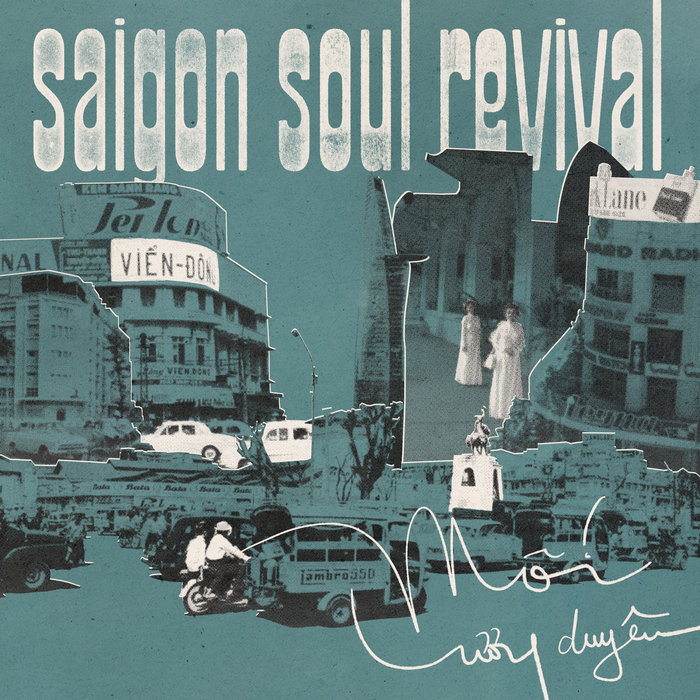
Ai Thật Lòng Yêu Ai – Saigon Soul Revival
this blog is GROOVY – check out great Soul, Funk, Jazz, Hip Hop, Bass, Breaks , Reggae, House n many more TUNES
Hey there, music lovers! Grab your dancing shoes as we take a funky trip down memory lane to explore the vibrant music scene of Ho Chi Minh City—Vietnam’s beating heart and undeniable cultural hotspot. From traditional melodies to modern beats, this city’s sound has evolved and grooved its way into the hearts of many!
Ho Chi Minh City, formerly known as Saigon, is not just famous for its historical significance and delicious street food. It has also been a hub for musical innovation since ancient times. In the early days, traditional Vietnamese music was dominated by instruments like the đàn bầu (a one-stringed instrument) and đàn tranh (a zither-like instrument). These sounds set the stage for what would be an explosion of genres over the years.
Fast forward to the 19th century when French colonialism introduced Western musical influences to Vietnam. Jazz began shaking things up in Saigon during this period, bringing about a new wave that blended local rhythms with swinging jazz tunes. Clubs started popping up all over town where locals could catch live musicians playing jazz standards.
Did you know? One popular gig spot back then was Café de l’Opéra! Legend has it that they once had a band so good people danced right out onto the streets—a true dance party spillover!
The Vietnam War shook things up dramatically in Ho Chi Minh City during the 1960s-70s. Musicians used their art as both protest and expression—a powerful tool amidst chaos. Rock n’ roll entered through American forces stationed there; think Jimi Hendrix meets Vietnamese folk tunes! Artists like Trịnh Công Sơn, who penned poignant songs during wartime, became iconic figures.
Fun fact alert! Despite being deeply anti-war in his lyrics, Trịnh Công Sơn was often mistaken for a soldier by people who loved his “rebel” image—he jokingly referred to himself as “just trying to avoid military service!”
After reunification in 1975, Ho Chi Minh City’s music scene underwent another transformation. Traditional festivals mixed with contemporary styles gave birth to V-pop—the Vietnamese version of pop music that emerged strongly from this West-meets-East vibe.
In recent decades, V-pop has exploded onto both national and international stages! Artists like Sơn Tùng M-TP, with his catchy hits and slick videos featuring jaw-dropping visuals reminiscent of K-Pop aesthetics have captured millions of hearts around Southeast Asia.
Ever heard how Sơn Tùng got slapped with copyright issues because he created too many ‘earworms’? That’s right! His success led him down some legal rabbit holes thanks to similarities between his tracks and others—but hey, imitation is flattery… or something like that!
By now we’re cruising into the late ’90s when hip hop found its groove on these bustling streets: graffiti artists painting walls under bridges while MCs threw rhymes together at open mics—and boy did it escalate quickly! Crews formed everywhere—from high schools to underground clubs—bringing energy that’s hard not to admire.
Here’s something funny: One novice rapper accidentally dropped their lyrics on stage while performing live—those verses ended up making their way online titled “My Lost Lines”! Talk about turning embarrassment into viral fame!
If there’s one thing today’s artists thrive on outside mainstream media platforms—it’s intimate café performances across districts like District 1 or Binh Thanh area flooding social feeds every night. You can find everyone from indie bands strumming soothing tunes under fairy lights beside hoards munching on street food delights – creating harmonious vibes around every corner!
You might laugh knowing that sometimes performers are serenading crowds composed mostly of uninterested tourists scrolling through their phones rather than appreciating fresh talent—but hey; they keep singing anyway—that’s passion wrapped inside laughter folks!
The city is rich with festivals celebrating multicultural collaborations among musicians worldwide—the annual Saigon International Music Festival unites varying genres showcasing talents ranging from rockers sweating out riffs next door at jazz lounges—all meeting somewhere within an eclectic spirit produced uniquely here where East meets West harmoniously evermore evolving daily.
Did someone say ‘collab’? Check out how local artists flip classic acts into electrifying remixes—you’ll find fans jamming alongside their idols laughing all night long at these epic mashups—a testament proving unity breaks any barriers if done right—with infectious grooves keeping everyone moving until dawn arrives!
So there you have it—the groovy history behind Ho Chi Minh City’s extraordinary music journey full of twists and turns sprinkled generously across timeframes filled endless laughs along each note played throughout generations past present future alike left awestruck simply enjoying life through rhythm melody heartbeat alive forever more wherever you roam… Peace Out 🎶✨

Ai Thật Lòng Yêu Ai – Saigon Soul Revival